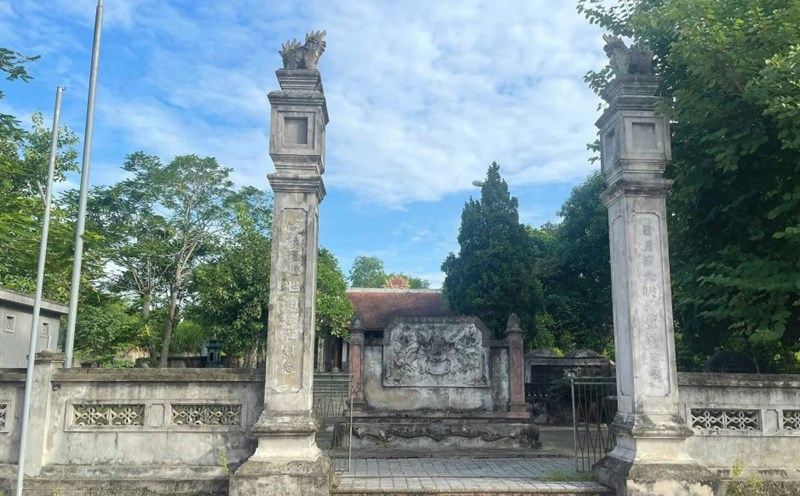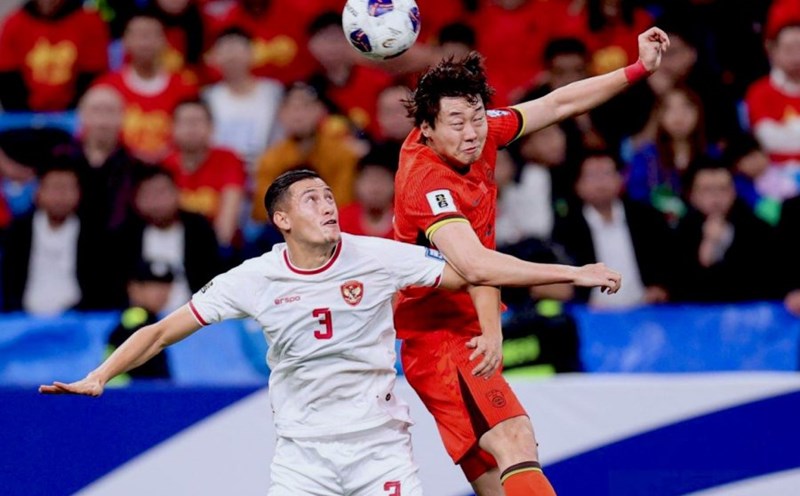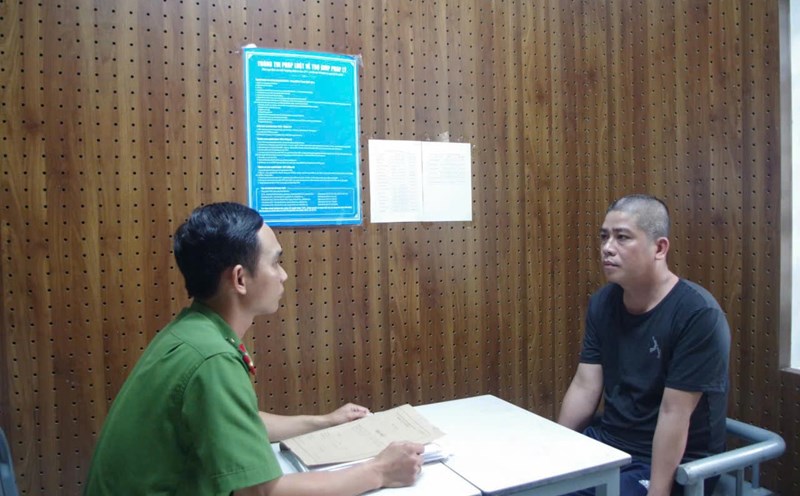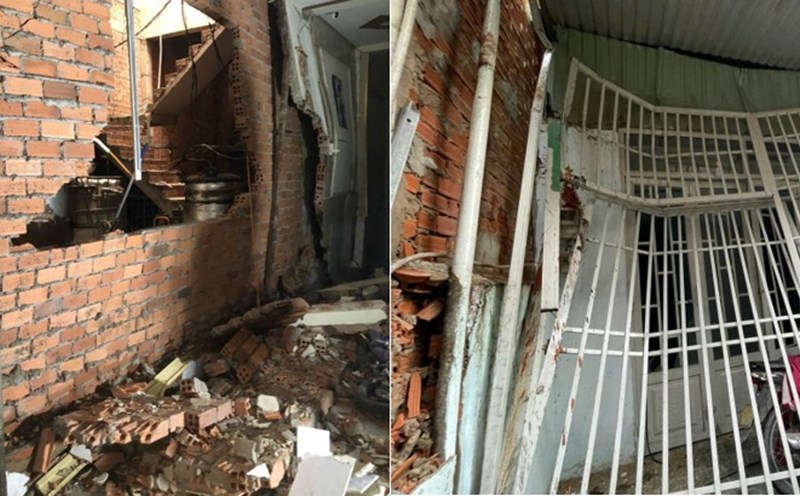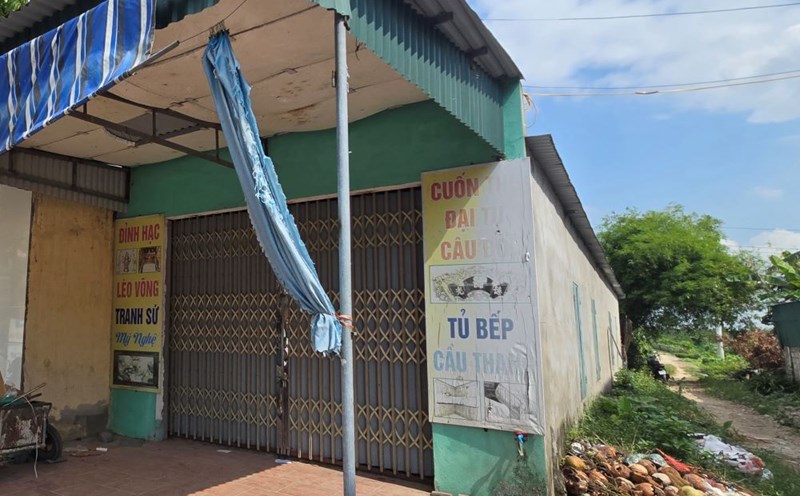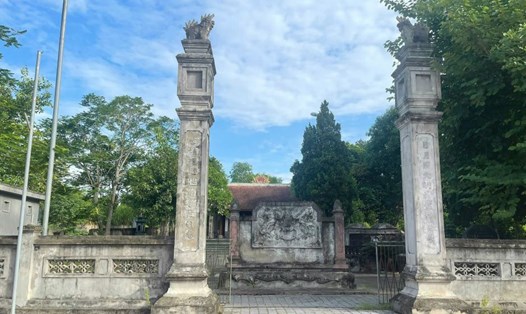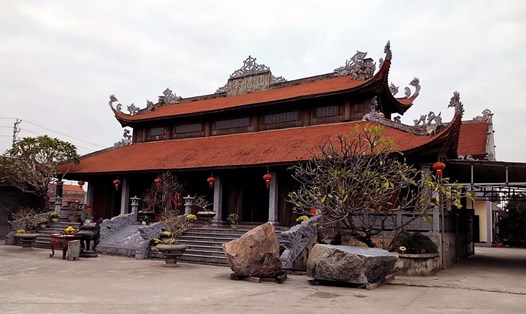Born into a family of generals
According to the inscription on the stele “Ngo Tuong Cong Duong Ky”, Cao Quan Cong’s family name was Ngo, his given name was Phuc Van, he was from Trao Nha village, Thach Ha district (now Nghen town, Can Loc district) Chau Hoan land (ie Nghe An - Ha Tinh). The research article “Ngo Phuc Van (1577 - 1652)” by writer Tran Dac Tuc wrote about Cao Quan Cong of Trao Nha land: “Ngo Phuc Van also has another name, Phuc Mai, his given name is Tu Han, his title is Huan Duong Chan Nhan, born on May 20, Dinh Suu (1577), died on August 15, Nham Thin (1652), at the age of 75” (Famous people of Ha Tinh, p. 207).
Duke Cao was born into a family of generals in Hoan Chau, with 6 consecutive generations of military commanders. The Ngo family in Trao Nha is honored as the family with the most dukes, 18 dukes, from the 5th to the 12th generation. Mr. Ngo Phuc Van, the eldest son of the Southern Army's Left Admiral, Thai Bao Ngo Phuc Tinh, was given the title of Tu Quan Cong. Phuc Van was the eldest grandson of the Western Army's Left Admiral, Thieu Bao, and was given the title of Thai Bao, The Quan Cong Ngo Canh Huu. According to the records in the historical records, The Quan Cong Ngo Canh Huu, who fought in the battlefield and was ranked 5th, a founding hero during the Le Trung Hung period. Lord Trinh Tung, after considering his achievements, awarded Ngo Canh Huu the title of Thieu Bao.
According to historical records , Ngo Phuc Van was handsome, tall and elegant, with bright eyes, fluent voice, and a gentle demeanor influenced by the three religions. The history of the Ngo family recorded that he was talented in both literature and martial arts: “He (Ngo Phuc Van) was born into a family of generals, talented in both literature and martial arts, not only had good health, excellent martial arts, and was well-versed in military books and tactics, but also had a profound understanding of sacred scriptures, legends, astronomy, geography, and mathematics. He was a famous general, an important minister of the Le dynasty, fighting the Mac in the North and the Nguyen in the South, maintaining the border. The people lived in peace for a long time. Not only during his youth, his stubborn temperament refused to submit to the powerful ministers, so the first 20 years of his achievements were not recorded in historical records” (Ibid., p. 207).
Meritorious mandarin of the Later Le Dynasty
According to the stele "Ngo Tuong Cong Duong Ky", in the year Canh Ty (1600), he was 24 years old, tried his best to help the court, held the position of Thiem Nghi, was appointed Thuong Tuong Quan Dien Tien Ta Hieu Diem, and was given the title of Tuong Khe Marquis. In the year Mau Ngo (1618), he married the District Lord (Chief Princess) Trinh Thi Ngoc Uyen, and was granted a fief by Lord Trinh. In the year Giap Ty (1624), he was promoted to the position of Cam Y Ve Thu Ve Su, and was given the title of Cao Quan Cong. In the year Binh Dan (1626), he led troops to attack Cao Bang, captured the false king Can Thong (king Mac Kinh Cung), and was promoted to the position of Trung Quan Do Doc Phu Do Doc Thiem Su. In the year Ky Ty (1629), he was promoted to the position of Dong Tri Admiral. In the year Tan Mui, he was promoted to Trung Quan Do Doc Phu Ta Do Doc, became an official of the Main Hall, and was allowed to participate in the court. In the year of Quy Dau (1633), he led troops to attack Dang Trong. General Cao Quan Cong commanded the rear army to transport food and supplies to reinforce the army, his reputation was famous. In the year of Giap Tuat (1634), he was promoted to the position of Thieu Bao.

In the year Canh Thin (1640), he plotted to capture the rebel Hien Quan, was promoted to the position of Thieu Pho, and obeyed orders to guard the entire Hoan Chau region. During the time he guarded Nghe An and commanded Bo Chinh, the country was peaceful, the court had a solid support, and the Nguyen army did not dare to invade the border. In the year At Dau (1645), he was promoted to the position of Thieu Uy. In the year Binh Tuat (1646), there was an edict, obeying orders to open Trung Nhue military camp. When going out to the border, he held the command flag, kept the territory safe, and prevented the enemy from invading Ngang Pass: "When going out to the border, he held the Mao Tiet Viet flag, kept the territory safe, and built the Great Wall. When entering the court, he was leisurely in the Lang Mieu, discussing politics, acting as a great minister and regent, setting an example for the time, placing the people's hearts on a solid place like Thai Son, and placing the country in a stable place like Ban Thach. His achievements will be recorded in history books, and his blessings will be as numerous as the top of a bell." The clan is prosperous, the descendants' blessings will be passed on forever" (Ha Tinh Stele, p. 121).
The year the stele was erected, Ngo Phuc Van was 74 years old, his hair was already yellow but his figure was still youthful, he was healthy and long-lived. In his free time, he often enjoyed poetry, playing the flute and taking care of flowers and ornamental plants in his garden. In his old age, he enjoyed traveling to beautiful places, visiting Taoist temples, pagodas, learning about the religion of the Holy Land, building Phuc Am Bao Cac, worshiping Tam Tai Thu Quan and giving 30 acres of good rice fields to Thai Ha commune to worship and burn incense. He was a filial person, donating dozens of acres of good rice fields to the people of Hoa Lung commune, Tho Son village, and Cuu Nhat to cultivate and take care of the ancestral worship. In addition, he gave the land he worshiped to the villagers to use for the village's worship of Thanh Hoang: "With such a heart, we know that Lenh Cong was loyal to the country, loyal to the family. Therefore, the blessings and blessings are worthy of the highest rank in the ancestral temple, passed down to his descendants, far and wide" (Ha Tinh Stele, p. 123).
Erecting the stele of Ngo Tuong Cong Duong Ky
Erected a stone stele to record the achievements to be passed down to future generations to follow. The stele was erected at the temple of General Cao Quan Cong Ngo Phuc Van, in Tho Son village, Trao Nha commune; now Phuc Son village, Nghen town, Can Loc district, Ha Tinh province. The stele has one side, size 150x100cm. The stele's forehead is carved with a dragon facing the moon. The border is carved with flowers, leaves, and lotus petals. The entire text is in Chinese characters, carved in a square and solemn manner.
The stele “Ngo Tuong Cong Duong Ky” was erected in the 3rd year of Khanh Duc (1651), during the Le Trung Hung period. The content of the stele contains the basic achievements of the General of the Central Army, Left Admiral, Second Lieutenant, Cao Quan Cong Ngo Duc Van.
The stele was drafted by Nguyen Thuan Phu, who passed the first class of the Doctorate exam in Dinh Mui (1637), and was an official of the Boi Tung, Right Deputy Minister of the Ministry of Rites, from Phu Luu commune, Dong Son district, Thieu Thien prefecture. Vu Quang Dai, Secretary of the Internal Army, Deputy Minister of the Ministry of Public Works, from Trao Nha commune, Thach Ha district, Ha Hoa prefecture, prepared and completed the manuscript. Nguyen Tho Dien, Internal Army Cau Ke, Deputy Judge of the Imperial Guard, from Bach Tri commune, Thach Ha district, wrote the letters. Phan Nhan Hoa, Grand Master of the Seal Image Department, from Co Trai village, Nghi Duong district, Kinh Mon prefecture, supervised the engraving of the letters.
Posterity honors the tradition of Ngo Trao Nha family
On August 15, Nham Thin (1652), Thinh Duc 1, Cao Quan Cong Ngo Phuc Van passed away. Cao Quan Cong Ngo Phuc Van's temple was built in 1655. After many historical events, the temple, stone stele and tomb still retain their ancient features and basic values. On June 23, 1992, Cao Quan Cong Ngo Phuc Van's temple and tomb were ranked as a National Historical - Cultural Relic by the Ministry of Culture - Information (now the Ministry of Culture, Sports and Tourism). In 2012, this relic was approved by Ha Tinh province for a large-scale investment and restoration project to preserve its valuable heritage.
Previously, the Vietnam Record Organization established the Ngo family in Trao Nha village - the ancestral Ngo Nuoc family with 3 contents: The family with the most dukes with 18 members; The family with many consecutive generations being awarded the title of duke with 8 generations (generation 5 to generation 12); 3 brothers were awarded the title of duke on the same day. In 2016, Can Loc district, Ha Tinh province held a ceremony to receive the Vietnam Record certificate "Honoring the value of the content of the Ngo Trao Nha family record - the family of 18 dukes".
Good land gives birth to heroes, Duke of Cao, Ngo Phuc Van, and the ancestors of the Ngo family in Trao Nha village, past and present, have given birth to many generations of talented and virtuous people recorded in history books such as Ngo Canh Huu and Ngo Phuc Tinh. In modern times, there is Doctor Ngo Duc Ke, leader of the Duy Tan patriotic movement, Ngo Duc Dien, leader of the Tan Viet Revolutionary Party organization in the early 20th century. Poet Ngo Xuan Dieu, famous as the leader of modern poetry, was greatly honored to receive the first Ho Chi Minh Prize for Literature and Arts from the Vietnamese State.

